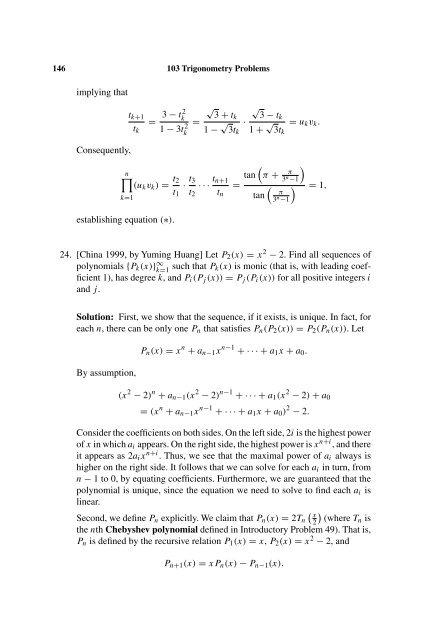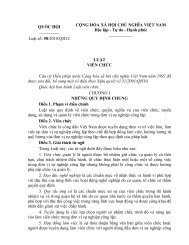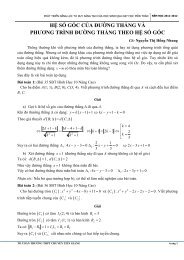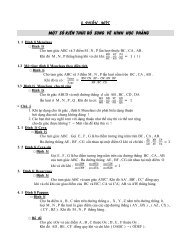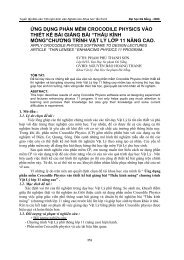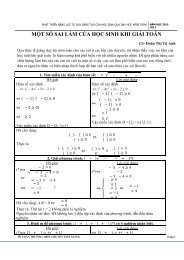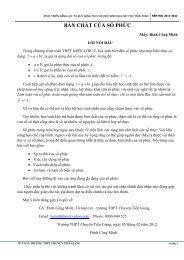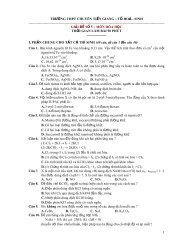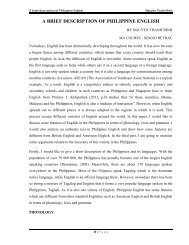103 Trigonometry Problems
103 Trigonometry Problems
103 Trigonometry Problems
Create successful ePaper yourself
Turn your PDF publications into a flip-book with our unique Google optimized e-Paper software.
146 <strong>103</strong> <strong>Trigonometry</strong> <strong>Problems</strong><br />
implying that<br />
t k+1<br />
t k<br />
= 3 − t2 k<br />
1 − 3t 2 k<br />
=<br />
√ √<br />
3 + tk 3 −<br />
1 − √ tk<br />
·<br />
3t k 1 + √ = u k v k .<br />
3t k<br />
Consequently,<br />
n∏<br />
(u k v k ) = t 2<br />
· t3 ···tn+1<br />
=<br />
t 1 t 2 t n<br />
k=1<br />
establishing equation (∗).<br />
(<br />
tan<br />
tan<br />
π +<br />
3 π n −1<br />
(<br />
π<br />
3 n −1<br />
)<br />
) = 1,<br />
24. [China 1999, by Yuming Huang] Let P 2 (x) = x 2 − 2. Find all sequences of<br />
polynomials {P k (x)} ∞ k=1 such that P k(x) is monic (that is, with leading coefficient<br />
1), has degree k, and P i (P j (x)) = P j (P i (x)) for all positive integers i<br />
and j.<br />
Solution: First, we show that the sequence, if it exists, is unique. In fact, for<br />
each n, there can be only one P n that satisfies P n (P 2 (x)) = P 2 (P n (x)). Let<br />
By assumption,<br />
P n (x) = x n + a n−1 x n−1 +···+a 1 x + a 0 .<br />
(x 2 − 2) n + a n−1 (x 2 − 2) n−1 +···+a 1 (x 2 − 2) + a 0<br />
= (x n + a n−1 x n−1 +···+a 1 x + a 0 ) 2 − 2.<br />
Consider the coefficients on both sides. On the left side, 2i is the highest power<br />
of x in which a i appears. On the right side, the highest power is x n+i , and there<br />
it appears as 2a i x n+i . Thus, we see that the maximal power of a i always is<br />
higher on the right side. It follows that we can solve for each a i in turn, from<br />
n − 1 to 0, by equating coefficients. Furthermore, we are guaranteed that the<br />
polynomial is unique, since the equation we need to solve to find each a i is<br />
linear.<br />
(<br />
Second, we define P n explicitly. We claim that P n (x) = 2T x2<br />
)<br />
n (where Tn is<br />
the nth Chebyshev polynomial defined in Introductory Problem 49). That is,<br />
P n is defined by the recursive relation P 1 (x) = x, P 2 (x) = x 2 − 2, and<br />
P n+1 (x) = xP n (x) − P n−1 (x).


